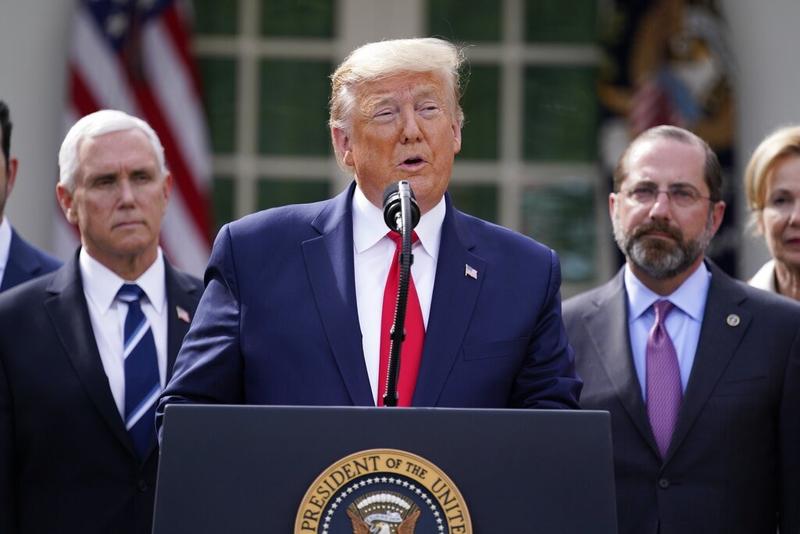 US President Donald Trump speaks during a news conference about the coronavirus in the Rose Garden of the White House, March 13, 2020, in Washington. (EVAN VUCCI/AP)
US President Donald Trump speaks during a news conference about the coronavirus in the Rose Garden of the White House, March 13, 2020, in Washington. (EVAN VUCCI/AP)
WASHINGTON – US President Donald Trump declared a national emergency over the quickly spreading coronavirus on Friday, opening the door to more government aid to combat a pathogen that has claimed at least 40 lives in the US.
READ MORE: Coronavirus poses new challenge to Trump's re-election bid
The impact of the coronavirus on everyday life deepened around the world. It was detected for the first time in several countries, with the World Health Organization (WHO) calling Europe the pandemic’s current epicenter. More schools and businesses closed, the global sporting calendar was left in tatters, and people faced greater restrictions on where they could go.
To unleash the full power of the federal government to this effort today, I am officially declaring a national emergency - two very big words
Donald Trump, US President
“To unleash the full power of the federal government to this effort today, I am officially declaring a national emergency - two very big words,” Trump said in remarks at the White House Rose Garden, adding that the US situation could worsen and “the next eight weeks are critical.”
Trump, whose action makes available US$50 billion in federal aid to states and localities, had faced criticism from some experts for being slow and ineffective in his response to the crisis and playing down the threat.
Trump said he was empowering the secretary of health and human services to waive certain laws and regulations to ensure the virus can be contained and patients treated. He also said that he was ordering every state in the country to set up emergency operation centers in a bid to help stem the spread of the disease.
The national emergency declaration "will unlock additional resources and authorities for states like Washington on the front lines of this crisis. I am hopeful the president's actions today will provide the assistance I asked for to help the workers, businesses, families and communities that are being impacted across Washington state," Washington Governor Jay Inslee said in a statement. "It is incumbent on all of us to acknowledge the gravity of this public health emergency and take the necessary actions now - not tomorrow, not next week - to slow the spread of the virus and save lives." said Inslee.
The declaration allows the Federal Emergency Management Agency to circumvent legal barriers to more quickly distribute disaster relief funding to state and local governments
Under the Stafford Act, an "infectious disease emergency declaration" by the president would allow the Federal Emergency Management Agency to provide disaster relief funding to state and local governments, as well as federal assistance to support the coronavirus response, according to a NBC News report. The law allows the agency to circumvent legal barriers to more quickly distribute such aid.
The country reported 1,663 COVID-19 cases as of Thursday with at least 40 deaths, according to the Center for Systems Science and Engineering at Johns Hopkins University.
The latest steps came two days after Trump announced travel restrictions blocking US entry for most people from continental Europe. While Britain was among the countries exempted, Trump said on Friday that might change because infections there had risen “precipitously.”
The president, who was photographed last Saturday at his private Florida club with a Brazilian official who has tested positive for the coronavirus, said he himself likely would be tested “fairly soon,” a reversal of his previous stance. But Trump, 73, said he did not plan to isolate himself, noting he was suffering no symptoms.
ALSO READ: Washington state man becomes first US coronavirus fatality
Travel bans have hammered airlines and travel companies worldwide, while financial markets have been hit by panic selling this week.
The three major US stock indexes rallied more than 9% on Friday, rebounding from Wall Street’s biggest daily drop since 1987. But the indexes were still about 20% below record highs hit in mid-February.


